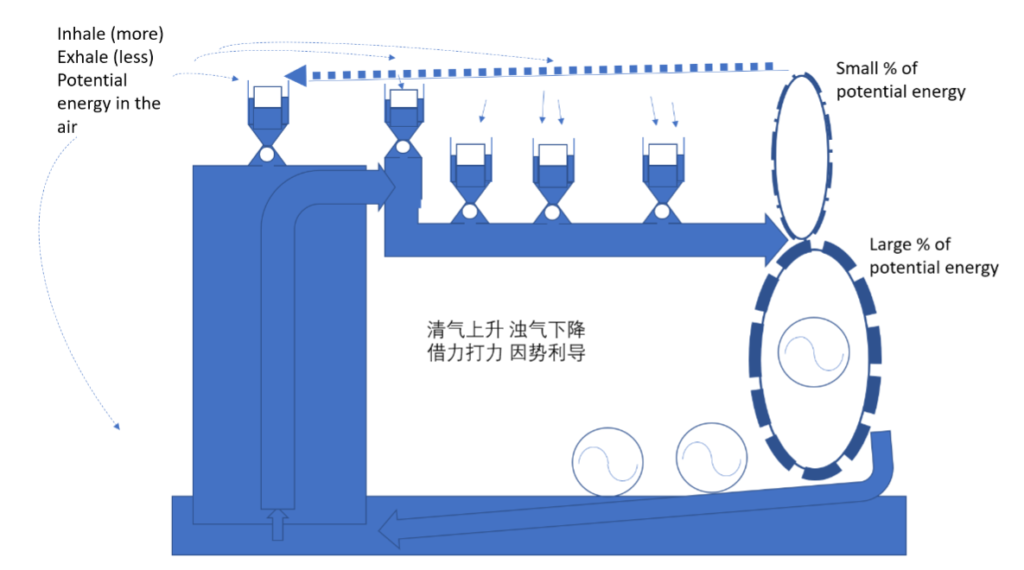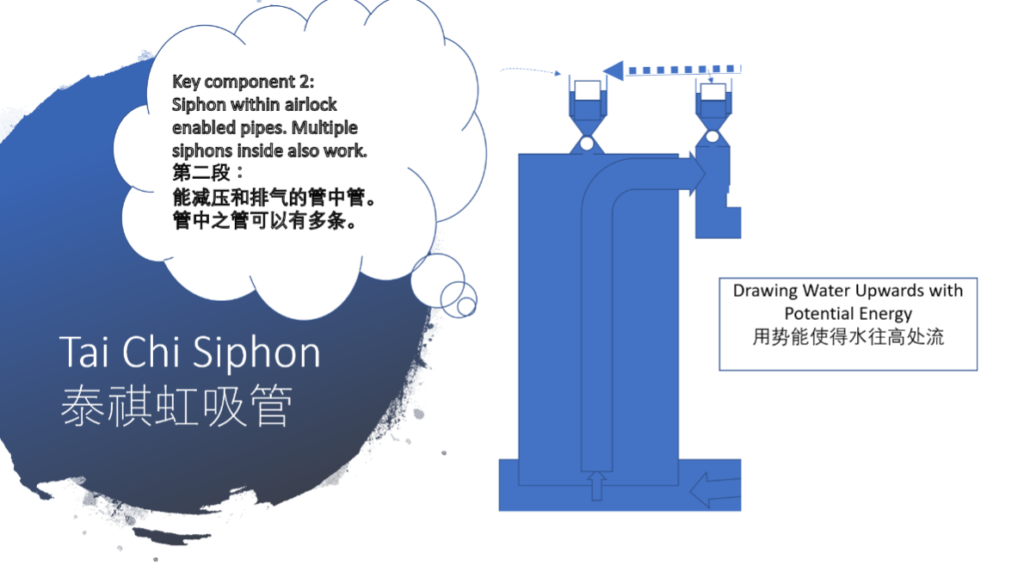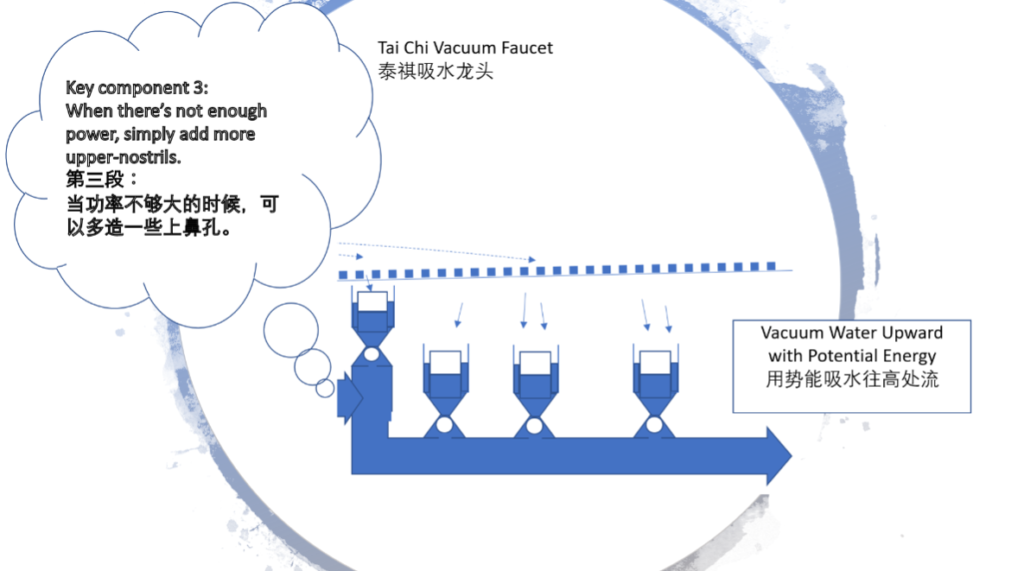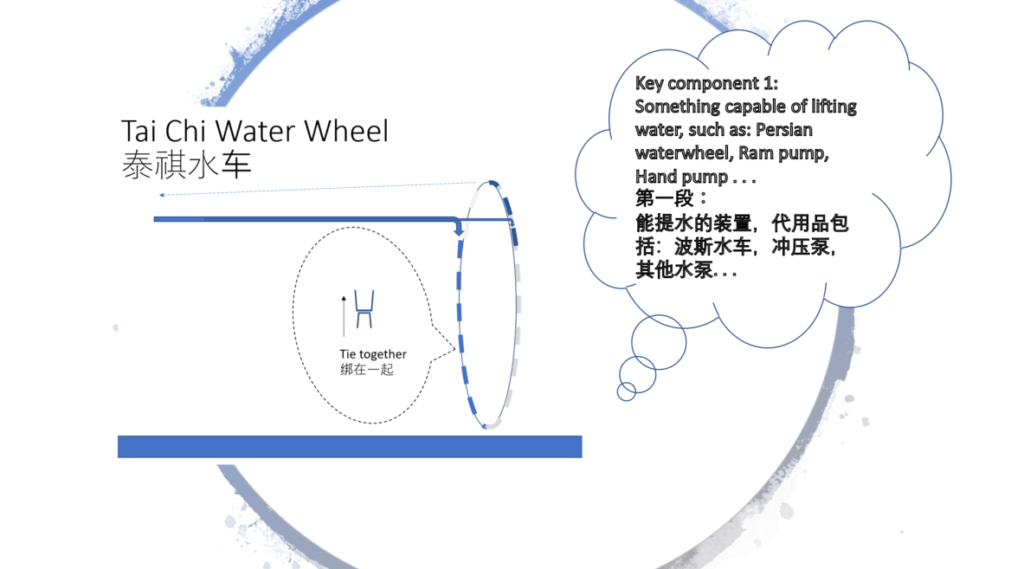
Above is an overview of the entire system and important devices.

Now, let’s look at these parts.

This is the main component that lift large amount of water upward, while having small amount of water sipping downward. This device can generate vacuum (low pressure) while squeezing the air bubbles out.

This is the component continuously breathing in more air than exhaling, while pulling water upward in one direction.

This is the component that lets most of the water fall down while lifting small amount of water upward.
Over all, the entire setting will let water movement balance out up-and-down, but keep on drawing in air to go through the system in a chain reaction. An artificial respiratory system is built and can sustain itself for years, much like a building in a home, a wind pathway formed in nature. But unlike wind in nature, this wind is actively “planted” “cultivated” and “harvested”, instead of being passively waited out and then “harvested” in today’s wind farms.